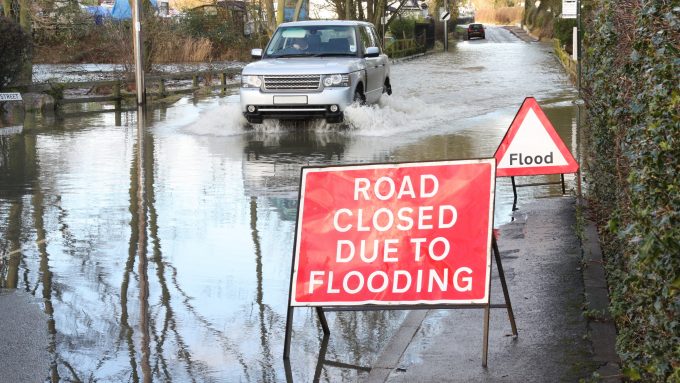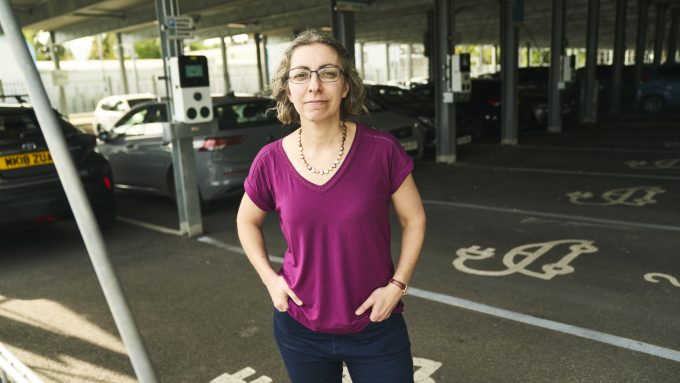
‘Who isn’t in the room?’ Public realm developers challenged to better understand communities

It is necessary for the built environment industry to move from “engagement as a transaction, to engagement as a core and consistent part of the process”. That’s what Daisy Narayanan MBE, Public Realm Director at The Crown Estate told delegates at the Connected Places Catapult pavilion in the heart of UKREiiF - The UK’s Real Estate, Investment & Infrastructure Forum.
In her opening remarks, Daisy spoke passionately about the climate and nature crises as vital context for all development. Daisy explained “our nature recovery cannot be separate from our approach to decarbonisation, our approach to energy security, to communities, our towns and cities, or the economy”.
She quoted former Colombian Environment Minister, Susana Muhamad, who spoke at biodiversity conference COP16 last year: "We've been living in a way that systemically destroys nature. We need to shift to living in a different way, that makes peace with nature and allows it to recover.”
In considering public realm – which she described as “the spaces between our buildings” – Daisy said she thinks about ‘making peace with nature’. She added it’s about “how we embed nature and landscape across everything we do through our business, our people, our partners our customers, in a way that helps everything to flourish”.
“Our climate and the resilience of our society depend on nature and biodiversity, and we know that climate impact is not experienced equally. As we continue to make change collectively, we have to ensure that we do not exacerbate existing inequalities.”Daisy Narayanan MBE, Public Realm Director at The Crown Estate
Daisy said we must “become accustomed to asking – in rooms that we are in – ‘who isn’t here? Who else needs to be here? Who is impacted by the decisions that we are going to make in this room?’”
The value of meaningful engagement
Daisy was joined on the panel by Matt Baker, Founder at Rise Associates; Lucy Musgrave OBE, Founding Director at Publica; and Phoebe Mangoma-Dennis, a consultant at Social Value Portal. Connected Places Catapult’s Head of Construction and Infrastructure, Gavin Summerson chaired the session.

Matt opened by saying that, “too often, engagement is a tick box exercise or window dressing”.
“Engagement for us is not just about building trust and making sure communities are heard and invested in regeneration. It’s about gathering vital intelligence to build spaces that meet those community needs.”
He gave examples of where Rise’s community engagement work had uncovered vital insights that transformed the understanding of a place. At a development in Manchester, engagement with GPs revealed that the closure of a market was having a catastrophic impact on older people, who had relied on it for human interaction. “They told us that they were seeing an increase in loneliness, dementia, and hospital admissions.” In Cornwall, they uncovered a generational divide between Gen Z and Gen X, with young people saying they felt shut out of public spaces. And in the East Midlands, engagement with local people revealed that the design of a canopy was being exploited by criminals to store drugs for drop-offs.
Each of these insights made the case for plans being altered and designs being changed to deliver outcomes that improve health, inclusion and safety.
Public realm is more than meets the eye
Publica’s Lucy Musgrave OBE framed public realm as “symbolic as well as functional”. “It is not only about the connective tissue, but it’s also actually where meaning lies and where we come together. Whether it’s our social infrastructure, transport infrastructure – the humble pavement, our pavement infrastructure – it’s where we all share something in terms of the values of our society.”
She went on to speak about the importance of ‘civic amenity’. “It sounds like a really old-fashioned thing but our proudest moments used to be our public buildings – the best stonework was at the library, or the best lighting was at the town hall – the design quality of our street lamps – these were things that people were really proud of. And we have, over time, just eroded and eroded and eroded. And if your pavement isn’t accessible, if you don’t feel safe going out, if you don’t feel that you can actually access any of the amenity that surrounds you, we are just isolating people.”
She echoed Matt and Daisy’s points that a wide range of people need to be involved in the conversations that shape public realm. “If you don’t understand different people’s lived experiences, you’re never going to have the right evidence base and you’re not going to be able to set the right spatial brief.”
Lucy highlighted the Campaign for Inclusive Cities and areas in which Publica has been specifically focused on researching, informing and influencing effective public policy. She spoke about women, girls and gender diverse people’s safety in public realm and how – with support from The Crown Estate – the work that Publica produced for the Greater London Authority – ‘Gender Inclusion and Women’s Safety – Public Realm Guidelines’ – is being shared internationally with 17 cities around the world.
She also highlighted young people and night-time workers as other groups where Publica has directed its focus to understand the needs of these groups who have historically not been well represented in the design process for public realm.
Understanding the impact of public realm
Phoebe Mangoma-Dennis of Social Value Portal described how the development of public realm has changed dramatically over recent years with an increased focus from developers on social value. She underlined the sector’s drive for more evidence to inform what should feature in public realm designs.
Speaking of her experience at the start of her built environment career, Phoebe said: “We were often working with fantastic design teams who were asking us, but how do we know what to be building in public spaces? How do we know physically what is going to improve the wellbeing and health of people in these communities that we’re creating? And we didn’t have the answer.”
Phoebe explained that they collaborated with over 40 design professionals to effectively establish a list of physical attributes – “things from a community garden, to an electric vehicle charging point, to a gender inclusive bathroom”. Then they surveyed 5,600 people looking to understand how people value these different attributes. “What impact are these different features going to have on people’s wellbeing? How does it differ according to socio-economic status, the type of area you’re living in – whether it be urban or rural - the age that you are, whether you have young children or whether you’re a single person living in an apartment?
“What this research has told us is that to answer the question ‘what makes a good place?’ is really hard because it actually means something totally different depending on who you are and what your circumstances are.”Phoebe Mangoma-Dennis of Social Value Portal
In concluding that it all comes back to how well you understand the people in the place you’re trying to serve, she pointed to the increasing use of data to better understand the composition and activities of communities, as well as new digital methods of engagement that can help developers reach people in new ways.
Driving innovation in the public realm
Gavin Summerson concluded the session by saying that this is just the beginning of the conversation from Connected Places Catapult’s perspective. This summer, the Catapult will announce a location partner for its upcoming public realm innovation initiative. That location will become a testbed for trialling new approaches for creating better public spaces.
Speaking after the event, the Catapult’s Director of Built Environment and Urbanism, Geoff Stevens, revealed that in just one month the Catapult received 47 expressions of interest from developers, local authorities and others keen to partner on the initiative.
Reflecting on this and the engagement with the Catapult at UKREiiF, Geoff said: “There’s a clear appetite from industry to innovate in the public realm space and Connected Places Catapult is focused on supporting that through practical initiatives and targeted research. If you’re passionate about driving positive change in this area, please do connect with us.”
Read more from UKREiiF 2025







